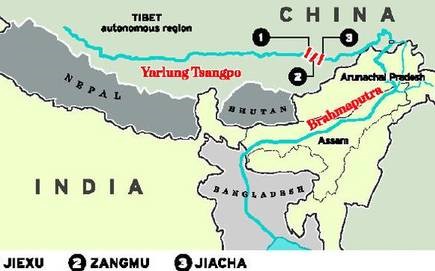Why in news?
A new study highlighting the impact of China’s dams on the Mekong river has raised fresh questions on whether dams being built on other rivers that originate in China, such as the Brahmaputra, may similarly impact countries downstream.
The Mekong flows from China to Myanmar, Laos, Thailand, Cambodia and Vietnam.

What the study showed?
China’s southwestern Yunnan province had above-average rainfall from May to October 2019, however, there was “severe lack of water in the lower Mekong”, the study found based on satellite data from 1992 to 2019.
The study released this month said six dams built had altered natural flow of the river.
India’s Concerns regarding Brahmaputra
- Indian officials have said the dams are not likely to impact the quantity of the Brahmaputra’s flows because they are only storing water for power generation.
- Moreover, the Brahmaputra is not entirely dependent on upstream flows and an estimated 35% of its basin is in India.
- India does not have a water-sharing agreement with China, but both sides share hydrological data.
- India will continue to raise the issue of river waters in the Brahmaputra with China, as that appears to be the only methodology to ensure what happened on Mekong does not happen on Brahmaputra.

China’s Response
- China called the study baseless, and maintained that the dams it is building on the river are “run of the river” dams that only store water for power generation.
- The study was not conclusive on the question of how China’s dams had affected quantity of flows.
- The study did not consider other dams and water-use along the course of the river.
- The lower basin isn’t entirely dependent on flows from China, but also receives water from tributaries in all four countries, which the study did not account for.



